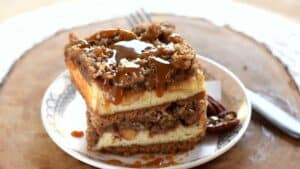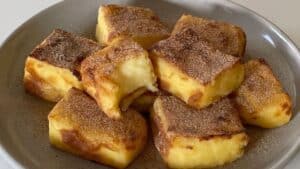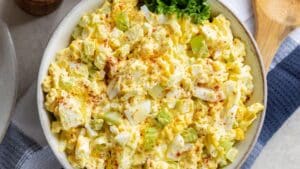If you think breakfast casseroles are just potluck fluff or last-minute brunch throw-ins, think again. There’s a quiet kind of brilliance to a well-balanced, deeply flavorful breakfast bake. One that combines crispy-edged tater tots, juicy sausage, creamy eggs, and just the right hit of cheese. It’s not just satisfying it’s a study in textures, timing, and layering. Today, we’re diving headfirst into a true modern classic: the Tater Tot Sausage Breakfast Casserole. We’re not here for the Pinterest version. This is the chef’s take.
This dish has turned up everywhere lately from high-end brunch spots in Brooklyn to dusty diners in Idaho that never change their menu. There’s a reason for that. It works. But to really make it sing? You need to know why it works and how to finesse each part like you’re plating for a critic, not just your sleepy Sunday crowd.
Let’s build this thing from the ground up, with professional eyes and flavor-first instincts.
The Origin of a Modern Casserole Icon
The first real mention of anything resembling a tater tot breakfast casserole in print appeared in the late ’90s in Midwestern church cookbooks those spiral-bound relics filled with charming chaos and too many Jell-O salads. But it really took off with the rise of frozen convenience culture. Ore-Ida made the tot a household name, and from there, cooks started layering them into anything and everything.
Now? It’s no longer kitsch. It’s nostalgia with culinary chops. In fact, the National Restaurant Association named “modern comfort” as one of the top trends in 2024. Dishes like this one classic, but open to interpretation are a huge part of that.
But what makes a great tater tot sausage breakfast casserole? That’s the million-dollar question. Let’s break it down.
The Core Components, Deconstructed

Every breakfast casserole lives and dies by three things: the base, the binder, and the boost.
The Base – Tater Tots, Done Right
Tater tots may look like a gimmick ingredient, but they’re a structural workhorse. Unlike hash browns, tots hold their shape. They crisp better. And they bring a malty, almost sweet fried potato flavor when cooked just shy of burnt.
Pro Tip:
Parbake your tots before layering them into the dish. Don’t just toss them in frozen unless you like soggy bottoms. Bake them at 425°F for 20 minutes just enough to get that golden edge. You want crunch built into the blueprint.
Also, don’t overcrowd. Give ‘em space, just like you would in a pan of searing steak. That crisp matters. Crisp is contrast.
The Protein – Sausage, and Why It Matters
Not all breakfast sausage is created equal. Skip the bulk “pork with sage” grind unless it’s house-made or from a legit butcher. Many commercial breakfast sausages are loaded with sugar and emulsifiers that’ll weep into your eggs and ruin texture.
You want a coarse grind. Something with real chew and fat that’ll render properly. Try a mix of hot and mild if you’re using store-bought. Or go full artisan: fennel-heavy Italian sausage brings unexpected backbone, especially if you counter it with a little maple syrup.
Cook it hard. No half-browned mush. Brown = flavor. You want crisped bits, little umami bombs that stand up to the eggs and starch.
Data Point:
A 2023 survey by the American Egg Board showed that 78% of consumers say sausage is their preferred meat in egg-based dishes. It’s a familiarity factor and chefs use it to anchor more adventurous flavors.
The Binder – Eggs, Cream, and What They Do
Eggs are the glue, yes. But they’re also the textural base of the entire dish. Get them wrong and everything suffers. Scrambled-looking eggs = overbaked. Watery, flat eggs = underbaked or poor ratios.
The classic formula? 1 egg per serving, plus half as much dairy by volume. For an 8-serving casserole, that’s 8 eggs and 1 cup of cream or whole milk. Better yet, go 3:1 egg to half-and-half it gives the custard body without being too rich.
Add a pinch of mustard powder, a hit of cayenne, and salt. Always salt the egg mix separately. Don’t rely on the sausage to season the whole dish.
Here’s something most recipes skip: rest the egg mix before pouring. Let it sit for 5–10 minutes so the proteins relax. That way, the bake sets evenly, with no weird curds or rubbery bands.
Layering Like a Pro
Here’s how most people build this casserole: tots, sausage, eggs, cheese.
Here’s the right way:
- Bottom Layer: Light sprinkling of cheese this keeps the tots from sticking and gives the base a caramelized layer.
- Tots: After par-baking. Lay them tight, but not crushed. Flat side down. Geometry helps.
- Sausage: Scatter in a mosaic, not a clump. Even distribution = better bite consistency.
- Egg Mix: Pour slowly. Let it settle through the layers. Don’t dump it all at once.
- Top Cheese: Use a blend sharp cheddar for bite, mozzarella for melt, Gruyère if you’re feeling fancy.
You can optionally cover and refrigerate overnight. It actually improves structure. But let it come to room temp before baking cold casserole equals uneven baking.
Baking and the Golden Zone
Preheat your oven to 350°F. No hotter. You’re not roasting a chicken.
Bake uncovered for 45–50 minutes, until the center jiggles just slightly. A thermometer stuck dead center should hit 160°F. Pull it then. Not at 180°F. By that point, the eggs are rubber and the cheese is oil.
Let it rest. At least 10 minutes. This step’s non-negotiable. Otherwise, you’re just scooping yellow soup.
Variations That Actually Work
Southwest Style
Add roasted green chiles, pepper jack cheese, and a bit of cumin to the egg mix. Top with a chipotle crema. Avoid fresh jalapeños they get soggy and weird.
Veggie-Forward
Swap sausage for sautéed mushrooms, spinach, and caramelized onion. Use fontina cheese and add a bit of white truffle oil to the eggs. Very brunch-y. Very now.
High-Protein Athlete Style
Sub tots for diced sweet potatoes, add turkey sausage, and fold in cottage cheese to the egg mix. Bake in individual ramekins. Bodybuilders love it. Still tastes like a cheat meal.
What Professionals Get Wrong (And How to Fix It)

Even seasoned cooks mess up breakfast casseroles. Common mistake? Overloading the egg mix with heavy cream. Another one? Not accounting for water content in add-ins like mushrooms or tomatoes. Those need to be pre-cooked, hard, or they’ll bleed and mess with the bake.
Also don’t use pre-shredded cheese. The cellulose coating makes it resist melting. You want gooey ribbons, not clumps.
Last: stop garnishing with raw herbs. Nobody wants a cold sprig of parsley on a hot dish. If you want freshness, fold in chopped chives or green onions after baking. Warm herbs taste more integrated.
Shelf Life, Storage, and Scaling
Professionally speaking, this dish holds better than most egg-based casseroles. The starch from the tots helps trap moisture, and the fat in the sausage keeps flavor alive even after chilling.
Cool fact:
When stored correctly, this casserole can be safely held in a commercial fridge for up to 5 days (per USDA guidelines), and up to 2 months frozen. Just be sure to reheat it to 165°F internally.
If you’re scaling for events, use hotel pans and double the egg ratio slightly. The deeper the pan, the more lift you need. Add 5–7 minutes to bake time per extra inch of depth.
Conclusion: Why This Dish Still Matters
This isn’t just a comfort food trend. The Tater Tot Sausage Breakfast Casserole is a blueprint for modern brunch design structured, craveable, flexible. It’s what happens when tradition and technique play nice.
For chefs, it’s an easy sell. For caterers, it’s efficient. For home cooks, it’s the kind of dish that makes people ask for the recipe and mean it. But only when it’s done right.
So next time someone shrugs and says, “Oh it’s just a breakfast bake,” you can give them that look. You know the one. Because you’ve got layers.
Want to go even deeper? Try a version using duck sausage, Béchamel instead of eggs, and tater tots made in-house. Now you’re cooking like a professional who knows the rules and when to break them.









